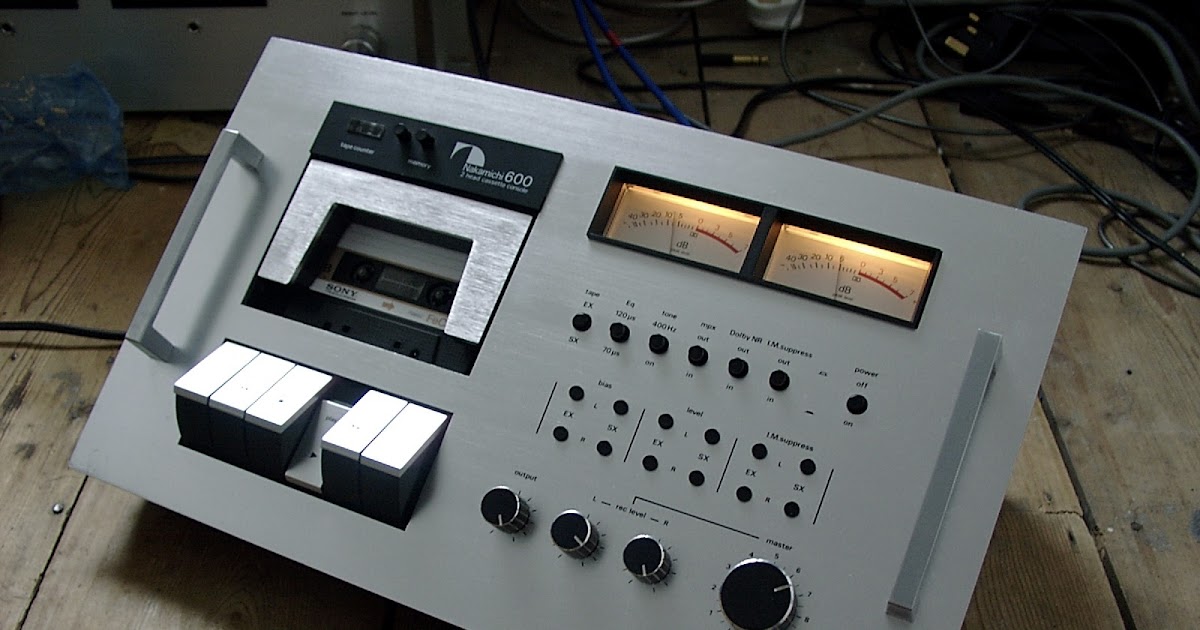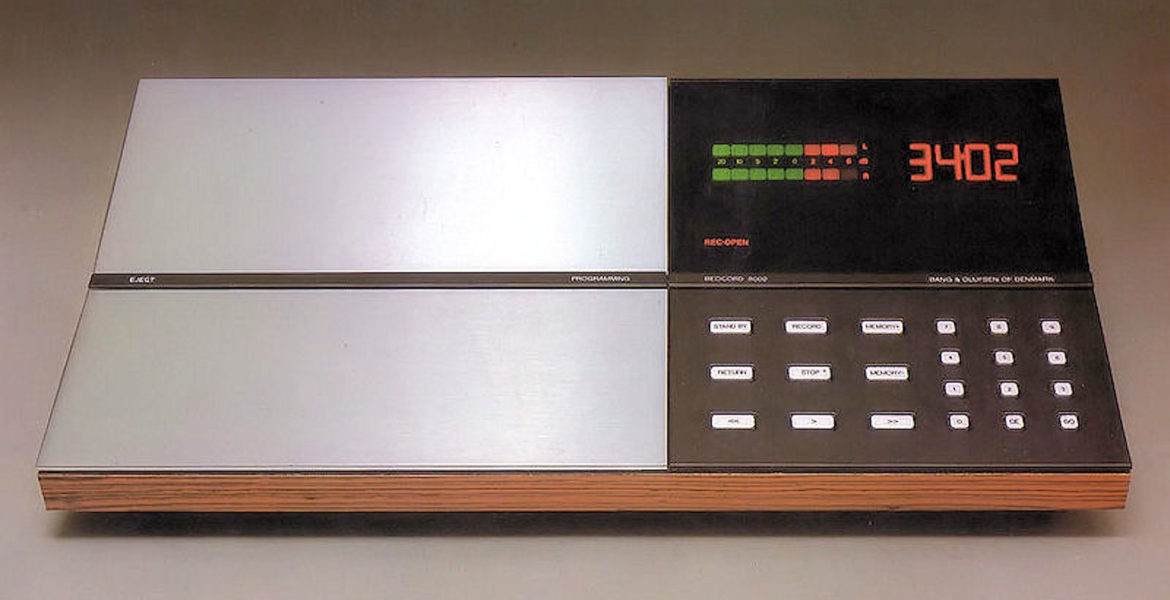Although Compact Cassette was first introduced in 1963, it was not until the 1970s that the format properly matured. It was still quite low on the evolutionary scale at the start of the decade, being the domain of small mono cassette portables that found their way into cars, toilets, children’s bedrooms, and gardens.
It’s even more incredible to consider that towards the end of the 1970s, you could buy things like these. The Aiwa AD-6900 was one of the most costly and advanced hi-fi stereo tape decks on the market at the time of its release. It’s difficult to overstate how important it was to any tape collector at the time. It was more than just a music-recording machine; it was a real “statement of intent” for what the Compact Cassette format could do. It was hugely clever, superbly made, and built, and it had open reel fans wondering how much longer they could hold out until cassettes took over.
Aiwa was already well-known for their cassette players, and the AD-6900 demonstrated that the company was at the top of its game. Nakamichi was widely regarded as making the greatest cassette decks, but they were prohibitively expensive, with high-end models costing roughly the same as a small vehicle. Aiwa set out to match, if not improve, Nakamichi’s designs for a fraction of the price. Despite this, the flagship deck in the UK cost roughly £400, which is comparable to the cost of a new motorcycle.
This deck’s engineering is mind-boggling. Remove the top of the 450x120x327mm box to reveal a slew of electronics, including 13 integrated circuits, 160 transistors, 85 diodes, and 12 field-effect transistors. The components, as well as the two motors – one for the driving reel and the other for the capstan – are of excellent quality. Its three heads, which include a ferrite erase head and a combined record/playback head, are also superb. This is a high-precision design, with a four-micron gap on the record head and a one-micron gap on the playback – the perfect sizes for each. The unit’s excellent frequency response of 20Hz to 19kHz, according to Aiwa, was due to this. The playback head’s V-cut design was believed to alleviate low frequency inconsistencies caused by the tape’s physical interaction with the playback head. To keep the azimuth between the two heads correct, both heads sat on the same 4-point stabilized diecast alloy base.
The Flat Response Tuning System, which works in conjunction with a set of revolutionary, dual-needle meters, is another striking feature of the AD-6900, in addition to the unique head configuration. FRTS was, by far, the most advanced bias and record calibration adjustment system of its sort at the time this deck was released. It allowed users to precisely set up the deck for any type of tape on the market, whether Ferric, CrO2, or FeCr. It contained low and high frequency oscillators that sent test tones into the tape at -15 VU at 400Hz and 8kHz, allowing for extremely accurate bias calibration. Three adjusters were installed on the front panel, allowing users to control bias and record calibration ‘presets’ for three different types of tape. The dual meters were remarkable at the time, as they displayed both VU and peak recording and playback levels, as well as being utilized by the FRTS to set up tapes.
The great level of attention to detail is maintained elsewhere. The advanced discrete transistor logic control circuitry provides one-touch cue/review without leaving play mode, thanks to a 38-pulse frequency-generated servo motor. Because of the usage of strong Ferrite heads, user head wear is not an issue. Instead of the then-standard frame type, the power supply uses a toroidal transformer. The Aiwa was one of the heaviest cassette decks ever produced, weighing in at 9.8 kilograms. Wow and flutter were reported to be as low as 0.04 percent, with a signal-to-noise ratio of 68dB. (with Dolby B). Total Harmonic Distortion was estimated to be less than 1%. When it was first released in 1978, this was the pinnacle of technology.
The AD-6900 II was released a year later, with minor but important modifications. Fans of cassettes are split on whether this is the better of the two, because it was better in certain ways but worse in others. The new Metal tape compatibility was the most significant upgrade, providing a startling 20Hz to 20kHz frequency response. The twin-needle meters were the most significant loss, with the peak metering replaced with a small LED bar-graph between the two analogue meters. This technology may have appeared more futuristic when it was first introduced in 1979, but it lacks the novelty and visual drama of the original twin needle system. The decks were nearly identical in every other way.
The AD-6900 is a fantastic sounding device. You can record high levels on a decent Chrome tape, and there’s an uncanny lack of the nasties that come with cassettes. The pitch is quite consistent, the treble is clean and open, and the bass is powerful and gutsy. Midband is remarkably vivid and transparent, with superb sound staging. It’s one of the few cassette decks I’ve heard that sounds as good as a serious open reel tape recorder. For example, if you don’t deliberately remind yourself, you can record from a high-quality turntable, play it back, and assume you’re listening to the turntable. It’s even more incredible to consider that this was only eight or so years after the hi-fi cassette deck became a phenomenon – and the term “hi-fi” was a fairly imprecise designation at the time.
These machines are still very common compared to other high-end cassette decks of the time, and they pop up on eBay and in classified ads every couple of months — with the typical concerns that come with buying a forty-year-old tape deck. Price is determined by condition, and condition varies greatly, so get the best you can afford and/or expect to service. It’s a difficult deck to work on, and it’ll require the services of a knowledgeable cassette deck mechanic. Although head wear is not a concern, rubber parts and solder joints do deteriorate over time. For a decent working example that doesn’t require any work, expect to pay £400.






